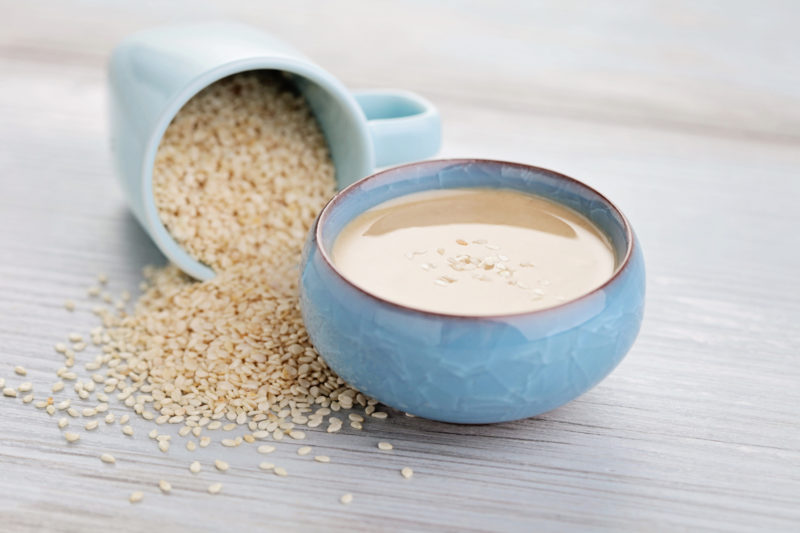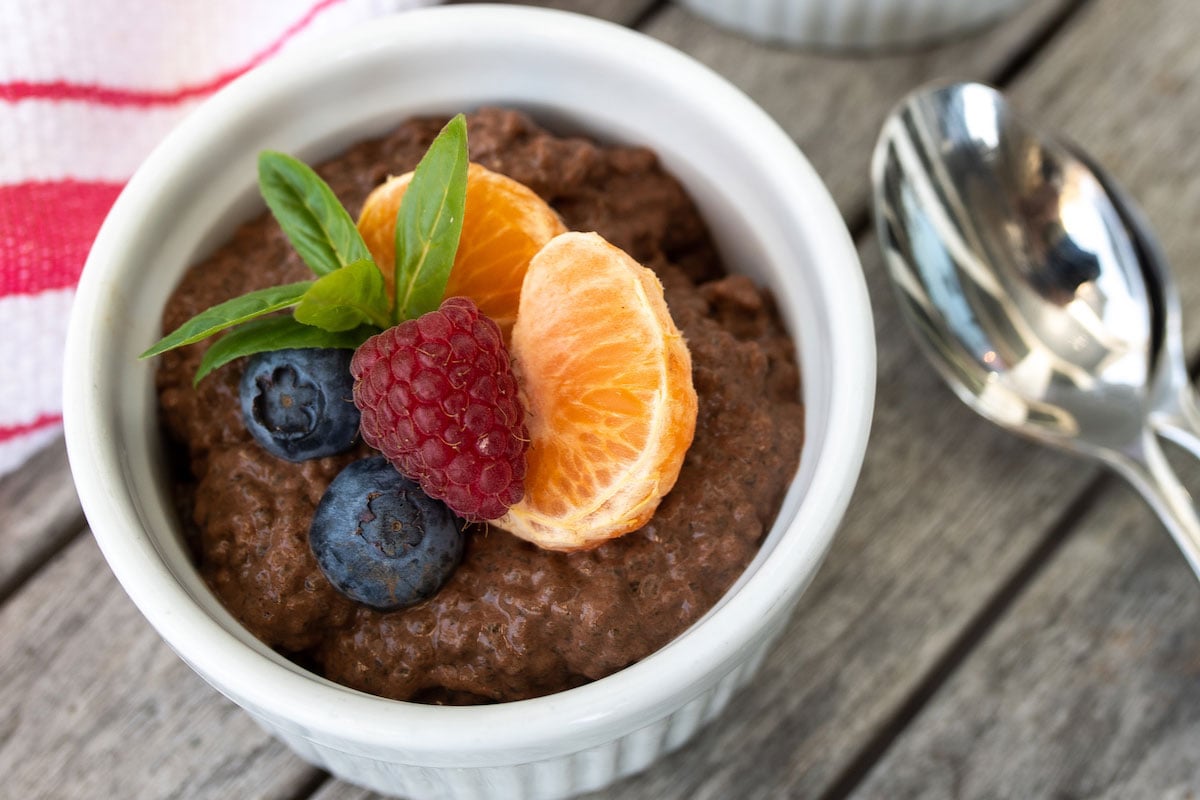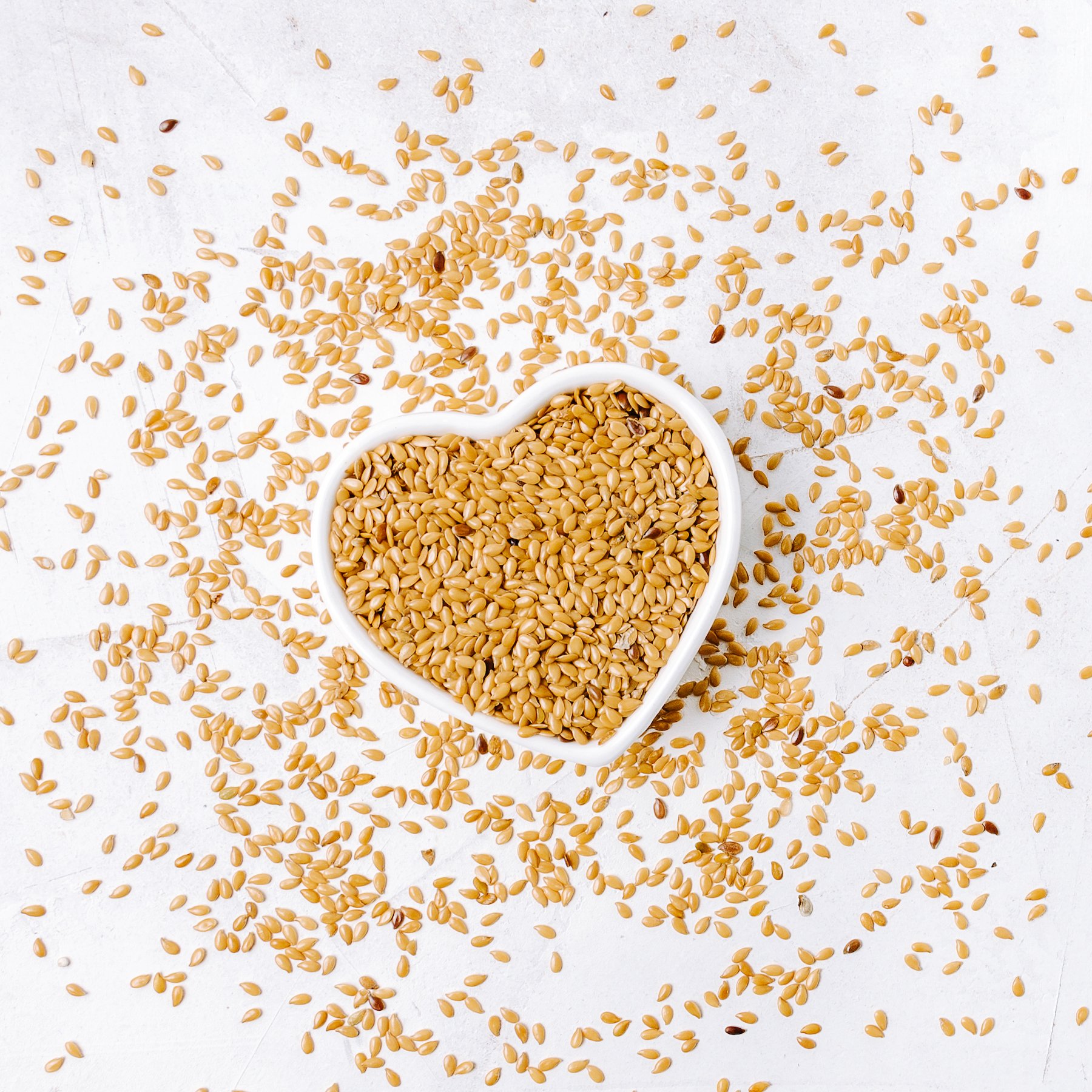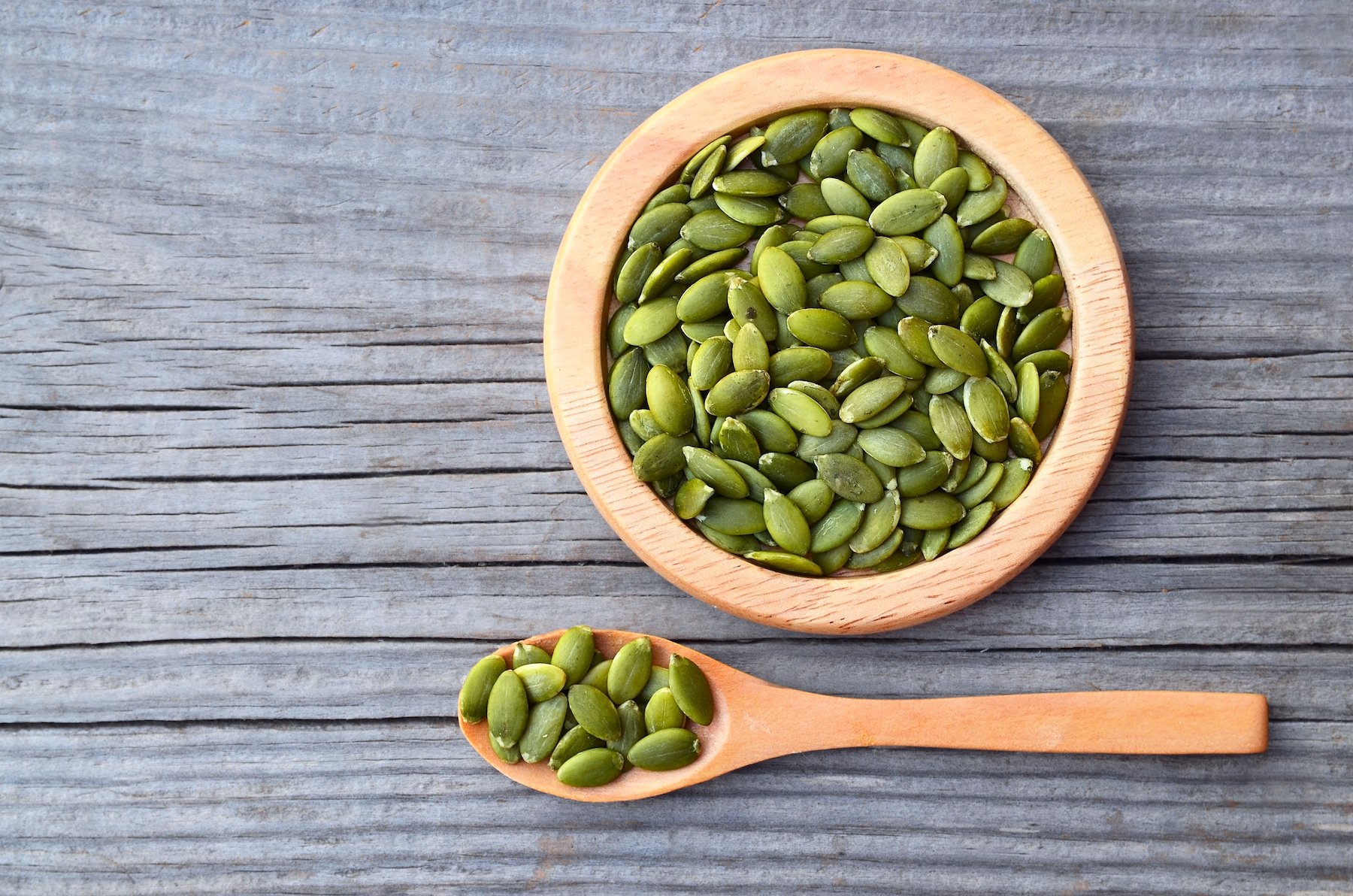Tahini is best known as the ingredient that makes hummus so rich and creamy. But it is far more versatile than you realize—and more nutritionally potent than you’d ever expect.
Regularly eating tahini is linked to lower cholesterol levels, reduced risk of cardiovascular disease, and decreased cancer incidence. The reason why boils down to the fact that tahini is the most highly concentrated source of sesame seeds you can incorporate into your diet, and sesame seeds are abundant in one particular chemical compound with incredible metabolic effects.
What is Tahini?
Tahini is a seed butter made from crushing sesame seeds into a paste. Tahini is a good source of fiber with ~3 grams per 2-tablespoon serving and boasts an array of beneficial compounds like polyunsaturated fats, calcium, iron, potassium, magnesium, and phosphorus. These nutrients play vital roles in muscle, nerve, heart, bone health, and blood pressure regulation. But tahini’s real metabolic superpower can be found deeper in its chemical makeup.
Like every plant-based food, sesame seeds contain phytochemicals. One potent line of phytochemicals is called polyphenols, which help combat pathogens and free radicals. The polyphenols in sesame seeds are lignans—and lignans are what makes sesame seeds so great
Sesame seeds are one of the two most highly concentrated sources of lignans in the world. (The other is flaxseeds.) These foods have a lignan content 100 times higher than other dietary sources.
What’s So Special About Lignans in Sesame Seeds?
Sesame seeds are especially rich in a lignan known as sesamin, which affects the regulation of several proteins and signaling pathways within the body that support metabolic health.
For example, sesamin leads to the increased production of adiponectin, a protein associated with improved insulin sensitivity. Additional research on people with Type 2 diabetes showed sesamin supplementation reduced fasting blood sugar, glycated hemoglobin (HbA1c), and tumor necrosis factor-alpha (TNF-α), an inflammatory marker produced in the body as part of the immune system. Studies also show sesamin contributed to a decrease in hip and waist circumference compared to the placebo group. All of these factors help combat metabolic disease.
“Compounds such as sesamin contribute to reducing oxidative stress, reducing the process of inflammation, and, therefore, helping protect the body from disease.”
Meanwhile, sesamin also acts as an antioxidant and inhibits several types of reactive oxygen species (ROS). You may have heard ROS referred to as “free radicals” or “oxidants.” These molecules are a byproduct of metabolism and are part of the body’s natural defense mechanism against harmful substances.
ROS result from processes including immune cell activation, mental stress, infections, diseases, and excessive exercise. External triggers can include pollution, certain medications, smoking or vaping tobacco, alcohol consumption, sunlight (ultraviolet radiation), or industrial solvents.
When concentrations of ROS become too high, they can overwhelm the body’s system for keeping them in check, causing cellular and DNA damage, along with inflammation. This is called oxidative stress. Oxidative stress can lead to metabolic diseases and disorders like insulin resistance.
This is where the antioxidants come in. At a molecular level, ROS possess an unpaired electron, so they can either accept or donate an electron, making them very reactive. Antioxidants have extra electrons they donate to free radicals, so the oxidative stress is contained.
Antioxidants, therefore, have an anti-inflammatory impact on the body. This is beneficial since the cornerstone of many diseases—such as cardiovascular disease, cancer, and Type 2 diabetes—is inflammation. Compounds such as sesamin contribute to reducing oxidative stress, reducing the process of inflammation, and, thus, helping protect the body from disease.
Tahini Buying Advice
- Tahini comes in two types: Unhulled or hulled, where the seed’s outer shell is removed. Most tahini is made with hulled seeds. Hulled tahini tends to be smoother and paler, with a milder flavor than the unhulled version, which some experts describe as having a firmer texture and slightly bitter taste. Hulled contains a higher content of calcium, iron, and fiber.
- There are three types of sesame seeds: white, black, and brown. Most tahini is made from white sesame seeds. While there may be some phytochemical differences between the three colorations, those differences haven’t been studied extensively yet and are unknown.
- Sesame seeds may be roasted or raw, which also affects the flavor profile. Whether there’s a significant difference in nutrient content between roasted and raw is unknown, as it hasn’t been researched. Meanwhile, taste comparisons of tahini brands invariably come up with differing opinions about which brand, texture, and flavor are best. Overall, silky, smooth, nutty flavors seem to be the most popular.
- Like natural peanut butter, Tahini separates into oil and solids in the container, so it needs to be stirred before each use. Some brands take an easy swish with a spoon, and others require a knife or stiff spatula to scoop up the hardened paste from the bottom.
- Tahini is shelf-stable after opening and should last for several months in a cool cabinet. However, the oil can get rancid over time, so give an old jar of tahini a good sniff before using it. Refrigerating tahini will help it last longer, but be sure to blend well before popping in the fridge; otherwise, it is near impossible to dredge the ground seeds from the bottom to mix into the oil.
Tips for Using Tahini
With its delicious creamy texture, tahini is a natural choice for making sauces and dips. But that’s just the beginning. You can use tahini in making cookies, granola, smoothies, soups, and even cocktails. Five ideas to try include:
- Whisk tahini, fresh lemon juice, garlic, a bit of water, extra virgin olive oil (EVOO), and a pinch of salt to make a dressing for salads, vegetables, or falafel.
- Add tahini to soups to make them creamy without dairy.
- For a twist on breakfast, try adding tahini to overnight oats or smearing it on pancakes as a substitute for butter.
- Drizzle tahini on roasted sweet potatoes.
- Finally, the classic: Homemade hummus is easy to make and delicious. Toss a 15oz. can of rinsed chickpeas, tahini, salt, garlic, lemon, and EVOO, in the food processor and puree. Thin with a bit of water if necessary. Spice it up with roasted red peppers, cayenne, or sundried tomatoes.
Lastly: A Quick Note About Allergies
In the spring of 2021, the FDA declared sesame the ninth major food allergen recognized by the United States. By January 2023, sesame must be listed in the ingredient list on food labels. Until that time, people with allergies or sensitivities to sesame should read food labels carefully and be on the lookout for the following ingredients: spices, gomasio, sesamol, sesame oil, natural flavoring, gingelly oil, and benniseed.








